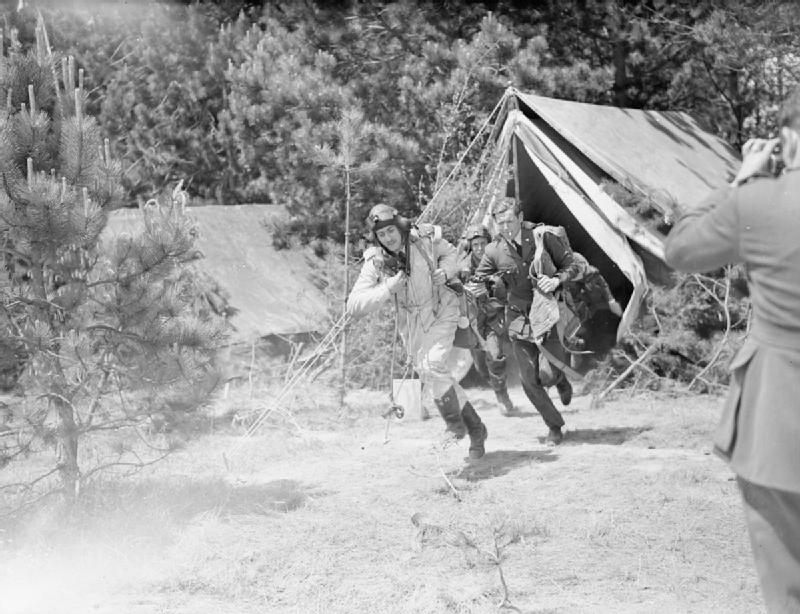|
Percy Morfill
Percy Frederick Morfill (11 December 1914 – April 2004) was a British flying ace of the Royal Air Force (RAF) during the Second World War. He was credited with least six aerial victories. From Gosport, Morfill joined the RAF in 1933 as a metal rigger. He volunteered for pilot training three years later and on completion of his flight training was posted to No. 65 Squadron. A few months after the outbreak of the Second World War, he was posted to No. 501 Squadron. He flew in the Battle of France and in the subsequent Battle of Britain, during which he destroyed a number of aircraft. Commissioned in 1942, he spent most of the remainder of the war as an instructor in the United Kingdom and Southern Rhodesia. Remaining in the RAF in the postwar period, he continued to serve in instructing posts as well as staff roles. He left the RAF in 1958 and worked in the automotive industry until 1977, when he retired. In April 2004, he died at the age of 89. Early life Percy Frederick ... [...More Info...] [...Related Items...] OR: [Wikipedia] [Google] [Baidu] |
Gosport
Gosport ( ) is a town and non-metropolitan borough on the south coast of Hampshire, South East England. At the 2011 Census, its population was 82,662. Gosport is situated on a peninsula on the western side of Portsmouth Harbour, opposite the city of Portsmouth, to which it is linked by the Gosport Ferry. Gosport lies south-east of Fareham, to which it is linked by a Bus Rapid Transit route and the A32. Until the last quarter of the 20th century, Gosport was a major naval town associated with the defence and supply infrastructure of His Majesty's Naval Base (HMNB) Portsmouth. As such over the years extensive fortifications were created. Gosport is still home to and a Naval Armament Supply Facility, as well as a Helicopter Repair base. The Town area of the Borough, including Newtown, consists of the town centre, Stoke Road shopping area, Walpole Park, Royal Clarence Yard and three modern marinas: Royal Clarence, Gosport Marina and Haslar Marina. As part of the ''Renaissa ... [...More Info...] [...Related Items...] OR: [Wikipedia] [Google] [Baidu] |
Aircraft Apprentice Scheme
The Aircraft Apprentice Scheme was a training programme for Royal Air Force ground crew personnel which ran from 1920 to 1966. Formation World War I saw the beginning of aerial combat. By 1 April 1918 the Royal Flying Corps and the Royal Naval Air Service had amalgamated into the Royal Air Force. Hugh Trenchard had been appointed Chief of the Air Staff and quickly discovered that specialist groundcrew were in very short supply. Wartime use of aircraft accelerated the development of new technologies. Aircraft power plants were vastly different from those that powered buses and lorries. Airframes, with their need to reduce drag and provide control in the air, were a totally new challenge. Armourers were asked to develop new fusing methods for equally new explosive devices like air-dropped bombs. Aircraft electrical systems included bomb release mechanisms and synchronised gun firing through the propeller via the use of an interrupter mechanism. The addition of a third dimensi ... [...More Info...] [...Related Items...] OR: [Wikipedia] [Google] [Baidu] |
RAF Tangmere
RAF Tangmere was a Royal Air Force station located in Tangmere, England, famous for its role in the Battle of Britain, and one of several stations near Chichester, West Sussex. The famous Second World War aces Wing Commander Douglas Bader, and the then inexperienced Johnnie Johnson were stationed at Tangmere in 1941. History First World War The aerodrome was founded in 1917 for use by the Royal Flying Corps as a training base. In 1918 it was turned over to the Aviation Section, U.S. Signal Corps (USSC) as a training ground, and continued as such until the end of the Great War in November of that year, after which the airfield was mothballed. Inter-War Years In 1925 the station re-opened to serve the RAF's Fleet Air Arm, and went operational in 1926 with No. 43 Squadron equipped with biplane Gloster Gamecocks (there is a row of houses located near the museum entrance called Gamecock Terrace). As war threatened in the late 1930s, the fighter aircraft based at Tangmere beca ... [...More Info...] [...Related Items...] OR: [Wikipedia] [Google] [Baidu] |
Royal Air Force- France 1939-1940
Royal may refer to: People * Royal (name), a list of people with either the surname or given name * A member of a royal family Places United States * Royal, Arkansas, an unincorporated community * Royal, Illinois, a village * Royal, Iowa, a city * Royal, Missouri, an unincorporated community * Royal, Nebraska, a village * Royal, Franklin County, North Carolina, an unincorporated area * Royal, Utah, a ghost town * Royal, West Virginia, an unincorporated community * Royal Gorge, on the Arkansas River in Colorado * Royal Township (other) Elsewhere * Mount Royal, a hill in Montreal, Canada * Royal Canal, Dublin, Ireland * Royal National Park, New South Wales, Australia Arts, entertainment, and media * ''Royal'' (Jesse Royal album), a 2021 reggae album * '' The Royal'', a British medical drama television series * '' The Royal Magazine'', a monthly British literary magazine published between 1898 and 1939 * ''Royal'' (Indian magazine), a men's lifestyle bimonth ... [...More Info...] [...Related Items...] OR: [Wikipedia] [Google] [Baidu] |


